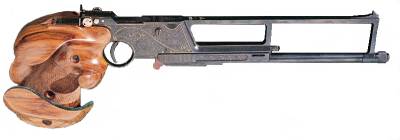 |
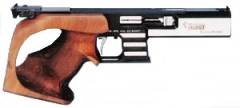 |
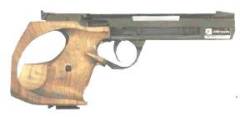 |
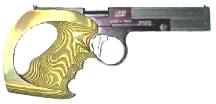 |
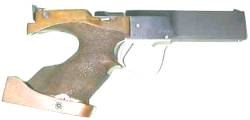 |
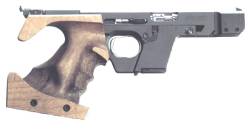 |
 |
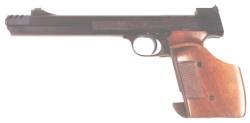 |
 |
 |
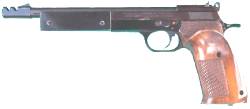 |
 |
| Target Pistol Evolution - 2 |
| The Rapid FIre Match had its origins in military practices of the late 19th and early 20th centuries. When adapted for Olympic use the match was shot using, initially, semi-auto pistols of .22 LR calibre but the ammunition soon changed to .22 short to lessen muzzle rise. This was important as each shooter had a bank of five targets to shoot at in very short time limits - 8, 6 and 4 seconds. Pistols used were primarily of simple blow-back design, usually with counter weights fitted and, near the middle of the 20th century, with compensators on the end of the barrels - again to minimise muzzle lift. This remained the case until the Melbourne Olympics in 1956, when the USSR team used a pistol which caused a major change to the rules and led the way to the development of the modern rapid fire pistol. |
| This is the pistol that caused a furore at the 1956 Olympics and led to a change in the rules for the Rapid Fire Match. There is actually very little about it that is revolutionary. It is simply a Margolin pistol which has been turned upside down, a longer barrel fitted, the trigger relocated and the grip so arranged that the barrel position is very low in relation to the hand. The barrel is on the bottom in the picture above and the sights are set on a ramp on the top. The pistol was nicknamed the "Hacksaw" pistol for obvious reasons. The rule changes made after these games limited pistols to a size which would fit into a box 30cm x 15 cm x 5 cm, and the centre line of the barrel bore had to pass above the hand, in the firing position. Ironically, these changes ultimately led to the development of a pistol which was truly revolutionary and which eventually led to the elimination of all muzzle lift in Rapid Fire pistols. |
| USA Rapid Fire Development |
| The USA never really took Rapid FIre seriously for long enough, mainly because of its own National Pistol Matches which were based on the .45 auto pistol and to a lesser extent the .22 and .38 calibre revolver/auto. As a consequence there was very little effort put into developing a world class rapid fire pistol. The High Standard was used successfully by top American Olympians for a number of years but the pistol was never really competitive. The experimental S&W RF pistol was an odd attempt to tame muzzle lift and was never greatly successful. American shooters now use European RF pistols at the Olympics |
| USSR Rapid Fire Development |
| USSR (now Russian) RF pistols were usually of basic design and heavily modified by Olympic team armourers to meet the needs of individual shooters. This included drilling barrel vents. The IZH 34 is still used but most Russian RF shooters now use European pistols for this event |
| Hammerli Rapid Fire Pistols |
| Hammerli once made a fine selection of RF pistols but since the 232, which never really gained great popularity, the firm has withdrawn from the RF market. This was unfortunate as Hammerli made really fine pistols |
| The Family of Modern Rapid Fire Pistols |
| Based on recommendations made by the ISSF Technical Committee and adopted by the ISSF Executive, the Rapid Fire Match will undergo a profound change following the 2004 Olympics in Athens. It has been decided to replace the .22 short rapid fire pistol with the Standard Pistol, described in previous pages. This will make the match quite a deal more difficult as the Standard Pistol uses .22 LR ammunition. No special grips will be permitted and venting of the barrels and or muzzle brakes will be banned. The existing Rapid Fire target will be replaced with a new target in the black and white format familiar to precision shooters. Time limits for the match will remain unchanged. Achieving high scores in the 4 second series with this type of pistol will prove a challenge for most shooters due to the amount of recoil generated by a Standard Pistol. Reasons given by the ISSF for these changes are that the .22 short cartridge was expensive to produce and even the best makes suffered from reliability problems, and it was also felt that the changes would make the match more popular with a greater number of shooters world wide. Whether this proves to be the case, only time will tell. Curiously, the wheel has almost turned full circle for this match, as the .22LR cartridge and this type of pistol was used in this match in its earliest days. Competitors can only hope that it will not fully revert to its origins with semi-automatic service pistols in full calibre having to be used. Now that WOULD be a challenge. |
| Ralf Schumann of Germany, World and Olympic Champion, shooting a rapid fire series. Note the gasses escaping vertically from the barrel vents |
| A close up of Ralf Schumann's pistol during firing, showing clearly the escape of gasses from the barrel vents. Also seen is the blur of the cycling bolt just to the left of the red Pardini brand |
| A competitor firing a series during the Munich World Cup in 2000. Each competitor has a bank of five targets and must fire a shot on each in the relevant time limit. |
| This is the father of the modern rapid fire pistol. It came into existence in c 1967 and what was revolutionary about it was that the barrel was vented, with four holes each approx 1.5mm drilled into it from the top which allowed the escape of gasses upward thereby negating muzzle lift. The pistol was also modular in construction and could be disassembled easily into its component parts. This became the dominant pistol in the rapid fire match for many decades to come |
| Beretta Olimpionico .22 short |
| USA Colt Woodsman .22 short |
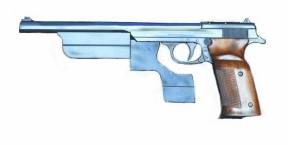 |
| Hammerli-Walther Olympia .22 short |
| Walther Extended Frame .22 short |
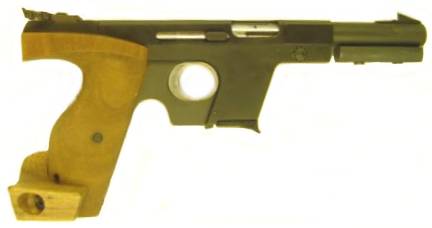 |
| German Walther Olympic Schnellfeuer Pistole (OSP) .22 short |
| High Standard RF pistol .22 short |
 |
| Smith & Wesson Experimental RF pistol .22 short |
| Hammerli International .22 short |
| Hammerli 232 .22 short |
| Margolin MCU .22 short |
| Baikal IZH 34M .22 short |
| German Walther OSP2000 .22 short |
| French Unique DES 2000 .22 short |
| Italian FAS OP 608 .22 short |
| Italian Pardini GP-E Schumann .22 short |
| The Rapid Fire Pistol |
| USSR Margolin MCZ .22 short |
 |
| Early Rapid Fire Pistols - 1900-1956 |
| The Progenitor of Change |
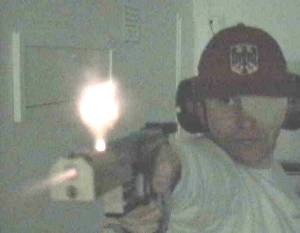 |
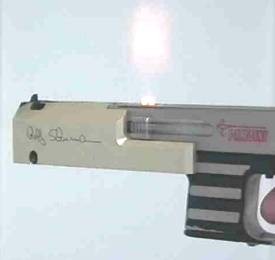 |
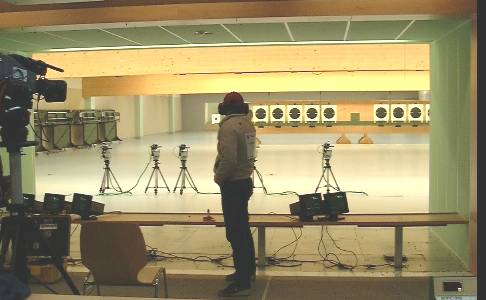 |
| Advice of Major Changes to the Rapid FIre Match |
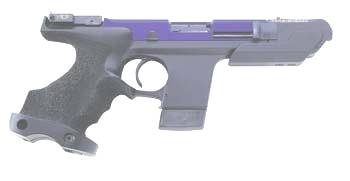 |
| An example of the type of pistol now approved for Rapid Fire Match - Hammerli SP20 Standard Pistol - .22 LR |
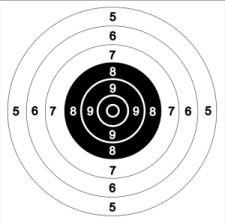 |
| The new Rapid Fire Target. Same size rings as before but new colour scheme. |
